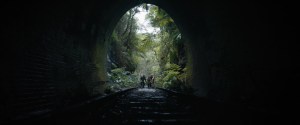Mark Hamill shares his old idea for Luke Skywalker’s tragic backstory in Star Wars: The Last Jedi, and it would have been a twist that was much too dark for the franchise. During an appearance on the podcast Bullseye with Jesse Thorn, Hamill discussed his experience making The Last Jedi. Though Hamill considers Last Jedi director Rian Johnson to be one of the best filmmakers he’s worked with, he didn’t agree with Johnson’s reasoning for why Luke had become a depressed hermit living out his days on Ahch-To. Feeling Luke’s resolve would only be strengthened when confronted by an apprentice who turned to the dark side, Hamill attempted to come up with something that never made it to the big screen.
Videos by ComicBook.com
“I thought, ‘What could make someone give up a devotion to what is basically a religious entity, to give up being a Jedi?’ Well, the love of a woman,” Hamill said. “So [Luke] falls in love with a woman, he gives up being a Jedi, they have a child together. At some point, the child, as a toddler, picks up an unattended lightsaber, pushes the button, and is killed instantly. The wife is so full of grief, she kills herself … but [Rian Johnson] didn’t have the time to tell a backstory like that, I’m guessing. He just wanted a brief thing to explain it.”
After Rey finds Luke isolated on Ahch-To at the end of Star Wars: The Force Awakens, The Last Jedi sheds light on the events that led him to the remote planet. When sensing the dark side emerging in his nephew Ben Solo, Luke briefly contemplated killing Ben to spare the galaxy from the atrocities he could commit as an agent of Supreme Leader Snoke. By the time the fleeting moment passed, Ben realized what was happening and destroyed Luke’s temple. Ashamed by his failure, Luke goes to Ahch-To to die.
Johnson’s portrayal of Luke in The Last Jedi is still one of the film’s most divisive aspects that inspires debates to this day. Some fans were upset that the hero of the original trilogy abandoned his closest friends in their time of need, while others found a lot to appreciate in a compelling arc about a broken man overcoming a crisis of faith and becoming a legend who inspired the galaxy.
Star Wars is no stranger to dark subject matter, including the deaths of children (see: Anakin killing younglings in Revenge of the Sith), but Hamill’s idea arguably would have been a step too far over that line. Even if this backstory wasn’t shown on screen, just hearing dialogue about a grief-stricken mother dying by suicide because her curious child was accidentally killed by a lightsaber would have been highly upsetting in a film that’s supposed to be family friendly (George Lucas always said Star Wars is for children). Obviously, something terrible needed to happen to Luke for him to seek exile, but it didn’t need to go to that dark of a place.
What Johnson came up with was effective for the story The Last Jedi was telling, and Ben Solo’s turn is arguably enough to warrant Luke’s exile. He didn’t just fail any random student; he failed his nephew, the child of his two best friends who trusted him with their son. To say Luke felt shame, guilt, and despair in that moment is probably an understatement. It was a tremendous personal failure that would have affected anyone — even one of the most powerful Jedi in the galaxy. Not only that, Luke’s temple marked the second time a Jedi Order had become undone, which likely made him reconsider the Jedi’s place in the galaxy. So while it may seem odd to some that the same person who never gave up on Darth Vader was so quick to move on from Kylo Ren, there’s enough there that it makes sense. What Luke didn’t realize before he met Rey is that failure could be a great teacher.









